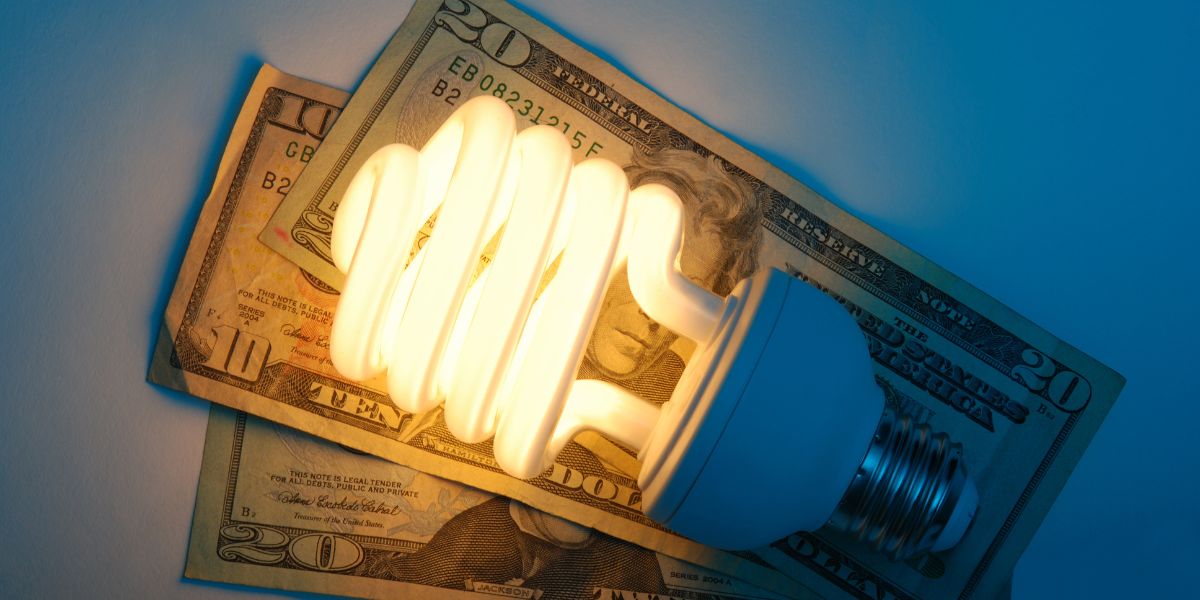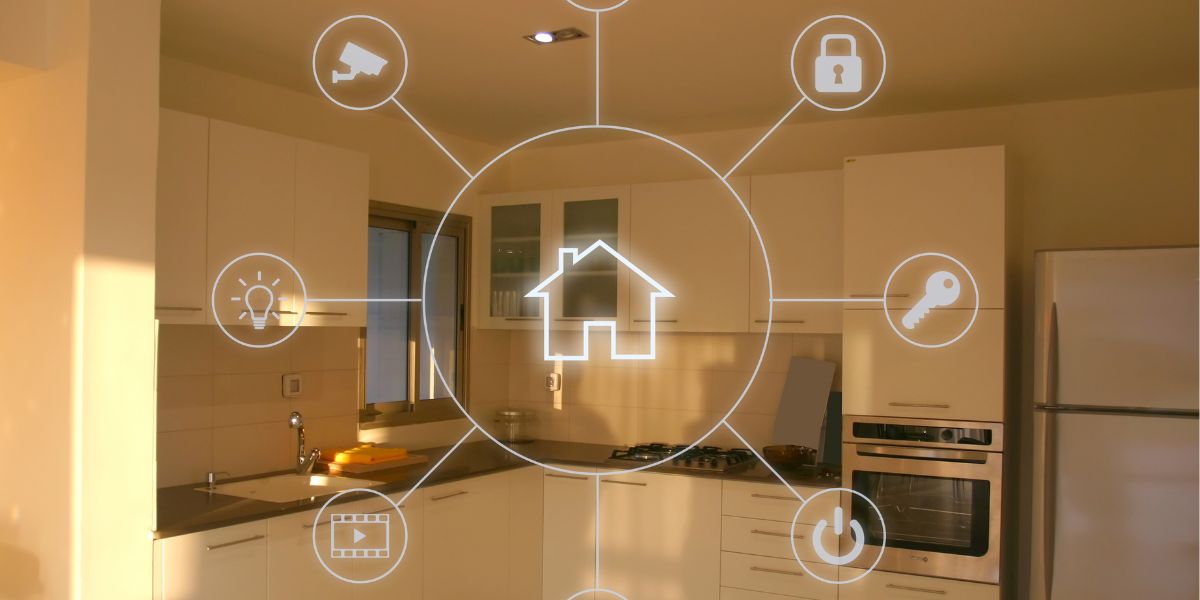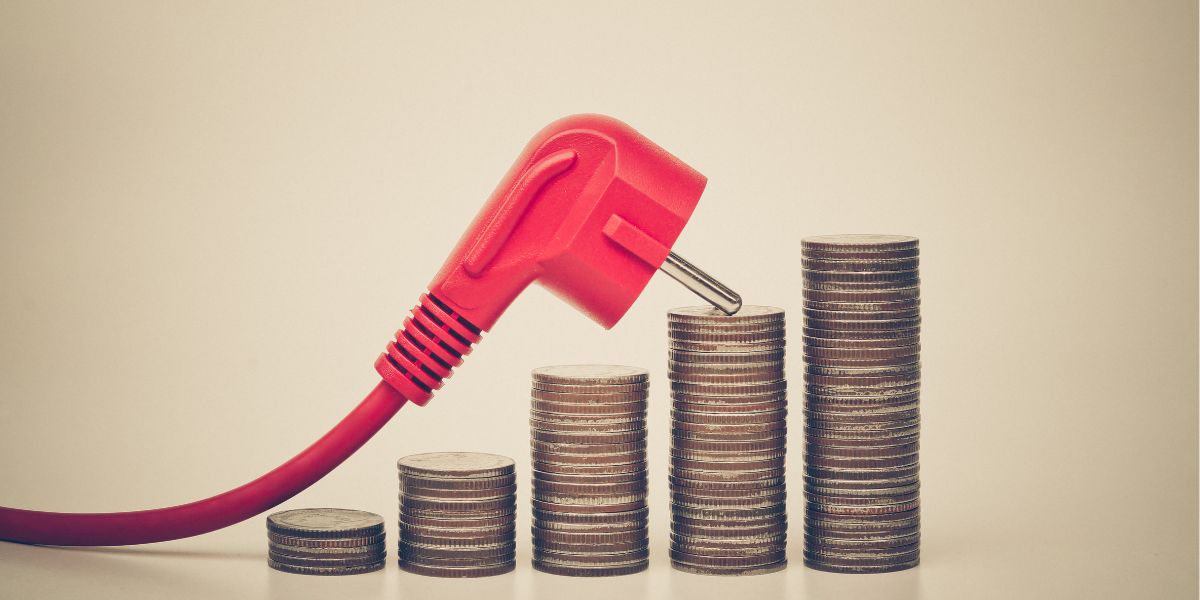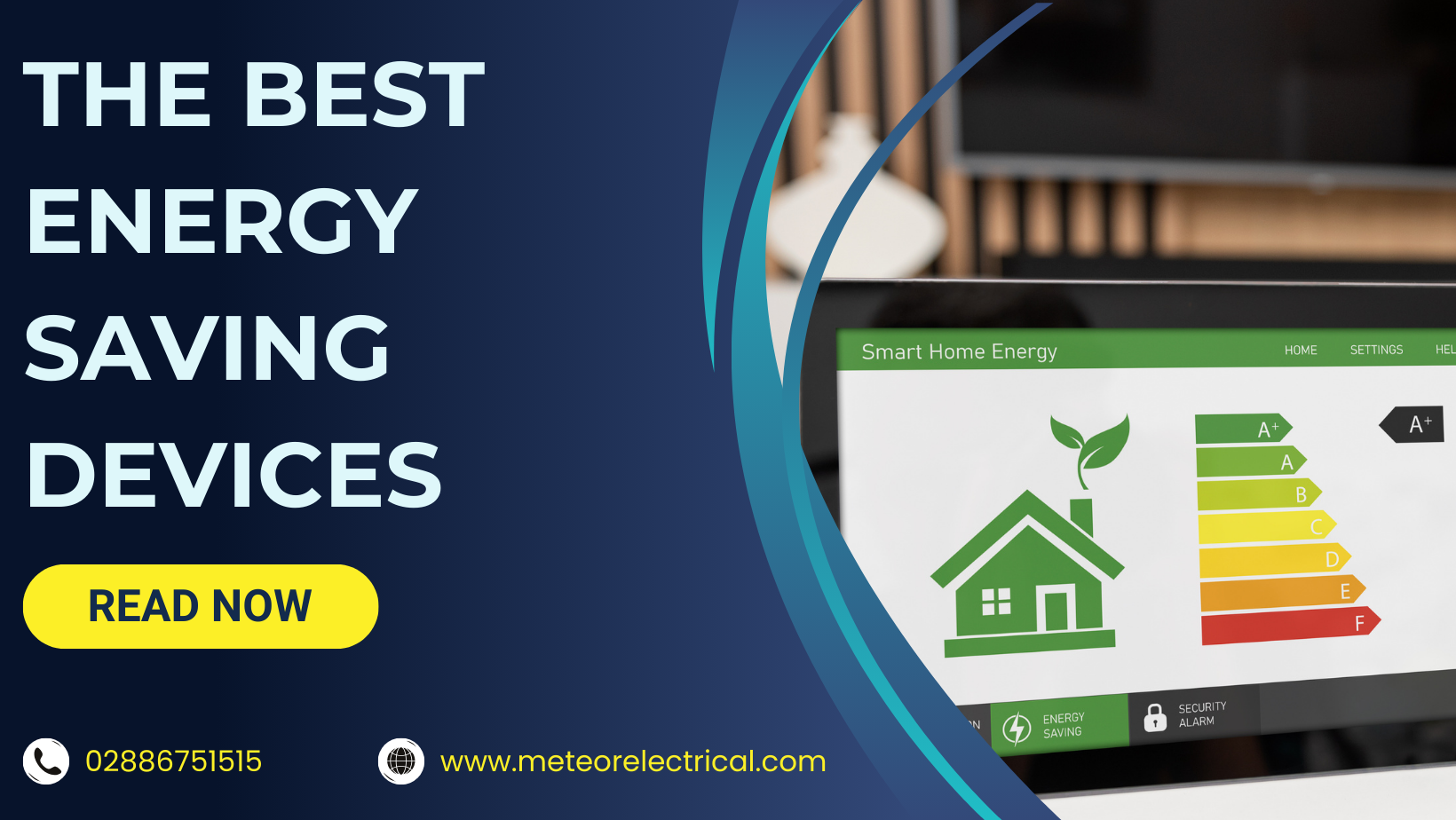Energy Saving Devices

As electricity prices soar, more homeowners turn to energy-efficient devices to keep costs down. These smart gadgets not only reduce energy consumption but also offer long-term savings. However, choosing the right energy-saving device can be challenging with the wide range of options available. In this guide, we’ll walk you through everything you need to know to make the best choice for your home.
According to the UK’s Department for Business, Energy & Industrial Strategy (BEIS), nearly 50% of UK households use smart meters to monitor and manage energy usage. With the push towards sustainability, this trend is only expected to grow. Let's explore how you can use these advancements to cut your energy bills.
What Are Energy-Saving Devices?

Energy-saving devices, often referred to as smart devices, provide enhanced functionality beyond standard appliances. These devices offer precise control over energy consumption, typically through network connections like Bluetooth, Wi-Fi, or other wireless technologies.
By integrating various household devices—such as heating, lighting, and security systems—you can control your home’s energy use with a smartphone or voice commands via a home assistant hub. This connectivity paves the way for home automation, where energy savings and convenience go hand in hand.
What Is Home Automation?

Home automation involves automatically controlling your home’s electronic appliances and devices. Connected to the internet, these devices can be controlled remotely, allowing greater efficiency and convenience. For instance, with a smart socket or switch, you can manage your lighting, ceiling fans, and other devices without manually operating each one.
The benefits of home automation go beyond convenience. These devices are designed to consume less energy, leading to significant savings on utility bills. Moreover, they enhance security by integrating with the Internet of Things (IoT), offering a more secure and connected living environment.
Credit: reviews.org
What is the Internet Of Things (IoT)?

The Internet of Things (IoT) encompasses devices that connect to the internet—think smart light bulbs, thermostats, or even fridges that you can control via an app. IoT devices differ from traditional ones because they offer new ways to interact with your home, making life more streamlined and energy-efficient.
While IoT devices form the backbone of a smart home, home automation is where the magic happens. It enables you to orchestrate your entire home’s energy use with minimal effort.
What To Look For When Purchasing Energy-Saving Devices
When shopping for energy-saving devices, always check the energy label. These labels provide essential information on energy consumption, helping you compare products. It’s also vital to consider the size of the appliance, as this can impact its energy efficiency and overall running costs.
How Do Energy Labels Work?
Energy labels offer crucial details about an appliance’s energy consumption. Nearly all household electronics in the UK come with an energy label to guide buying decisions. These labels feature a rating scale from A to G, where A (green) denotes high energy efficiency, and G (red) indicates low efficiency.
Additionally, the labels include QR codes for more product information and pictograms that visually represent the appliance's features and energy usage. This straightforward system ensures you make informed choices when buying energy-saving devices.
How Does Sizing Affect Energy Consumption?

The size of the appliance you choose can significantly influence its energy use. For example, a large dishwasher that’s never fully loaded will waste energy and money. Similarly, larger appliances with the same energy rating as smaller ones may still use more electricity overall.
Always consider both the size and energy rating to maximise your savings. For instance, a 70 kg, 265-litre fridge with a G rating may cost around £80 per year, whereas a larger, more efficient model could cost £90 annually. These factors are crucial in determining the true energy-saving potential of any device.
Other Ways To Find Energy-Saving Devices
Apart from reading the label and purchasing the correct appliance, there are several other ways to get the best energy-saving devices on the market. Here are some things you should consider before purchasing energy-saving devices.
1. Don’t Let Appliances Run On Standby Mode
An average household in the UK spends £55 per year powering appliances left on standby mode. This figure highlights how a significant portion of energy costs are wasted annually.
Homeowners can greatly benefit from purchasing devices that shut off completely or avoid entering standby mode. Standby mode refers to the energy a certain device uses when it is not operating and does not switch off at the plug.
Apart from electrical devices on standby mode, several other devices consume energy. These include broadband modems, broadband routers, telephones, and smart speakers. Most people don’t think about switching these devices off as they are often needed 24 hours a day.
However, even if these devices are not actively used, they consume unnecessary energy. To overcome this problem, you do not need to replace them or completely power them off. There are a number of other products available that help you significantly reduce standby energy consumption.
Such devices include standby saver products that allow you to simultaneously turn off all appliances from standby. Some devices come with a timer that sets an operation schedule, while others have a single off switch that completely powers off the device.
Many government regulations also encourage manufacturers to avoid designing products that consume too much standby power. EU regulations in 2013 stated that non-networked electrical devices should not consume more than 0.5W energy in standby mode.
Comparatively, network-connected devices such as gaming consoles and televisions could only consume standby energy between 3-12W, depending on the appliance.
Despite these regulations, you must check all the specifications regarding the standby energy consumption of a product you might purchase. You should also visit the manufacturer’s website to gain more information on this topic.
2. Reduce Your Laundry Costs
When it comes to washing machines or washer-dryers, you must purchase a product with an A energy rating. Even if this product costs more than a standard washing, it will provide you with many more benefits in the long run.
Most washer-dryers are expensive to run as they are not very energy efficient. Therefore, you must purchase a washing machine with a high energy label rating. You can try drying clothes on a washing line instead of using a tumble dryer for even more energy efficiency. This method is highly economical and consumes no electrical energy.
You can also purchase indoor drying racks to dry your clothing; however, this method might increase your home's moisture level. If you prefer a dryer, look for a product with added efficiency and functionality.
Some dryers include a sensor feature that lets you know when your clothes are dry enough. This feature prevents you from wasting energy by overdrying your clothing. Electric heat pump tumble dryers are also extremely efficient because they recycle the heat from the ventilation tube back into the dryer.
This process happens after the water vapour is removed from the air. Gas tumble dryers are less energy-consuming but expensive to install and require a gas connection.
3. Purchase Efficient Refrigerators and Freezers
Refrigerators and freezers are two of the most important appliances in a household, as they are used 24 hours a day, seven days a week. They are also some of the longest-lasting appliances in any household. Therefore, it is important to look for energy-efficient models to save on utility costs. As mentioned before, you must refer to the energy label when purchasing these appliances.
If you choose a higher-rated fridge/freezer, it will have a significant impact on your operational costs.
If you opt for a lower-rated fridge, such as an F or D-rated appliance, you will save approximately £570 in energy bills over the product's lifetime. However, since size is also an important component of energy efficiency, it is important to note that a smaller fridge will cost less to run.
But a larger fridge with a similar energy rating will cost much more energy in the long run. So, when purchasing an energy-efficient fridge/freezer, you must weigh the energy rating and the size to make the best choice. Energy labels provide consumption in kWh/annum to help you estimate what running each product might cost.
4. Consider Energy Efficient Light Bulbs
Light sources are another important device, and many households and not efficient light bulbs can waste a lot of energy. Energy-saving LED light bulbs are among the most efficient. LED stands for light emitting diode and this LED mechanism uses electricity to produce illumination.
Since LED technology is rapidly advancing, there is a wide choice of energy-saving LED light bulbs. Even though LED bulbs have a high upfront cost, they are cheaper than other light bulbs in energy-saving due to their longer life span.
LED light bulbs save up to 75% more energy than regular light bulbs, and they last 25 times longer, so you don’t have to spend much money on replacements. LED bulbs last longer because of their structural components. LED luminaries do not produce heat like incandescent light bulbs, which ruins that bulbing lighting capacity. If you are starting with energy-efficient products, LED bulbs are a great way to begin. You can easily replace your existing light bulbs with an LED.
What Are The Best Energy-Saving Devices?

At Meteor Electrical, you can find several energy-saving devices that provide convenience and reliability. There are also several types of efficient products, from energy-saving light sources to smart switches and sockets.
Visit Meteor to purchase our diverse range of high-quality products. Here are some of the best energy-saving devices Meteor offers.
| Device Category | Product | Key Features | Energy Saving Benefit |
|---|---|---|---|
| Light Sources | Kosnic 9W Energy Saving Bayonet Light Bulb | Warm white light, LED technology, 9W power | Significantly reduces energy consumption, affordable price |
| Light Sources | Kosnic 4.5W Warm White Lamp | 340 lumens brightness, 30,000-hour lifespan | High brightness with low energy use, long lifespan |
| Smart Sockets & Switches | Knightsbridge 13A Smart Switched Socket | Wi-Fi connectivity, compatible with Google Assistant and Amazon Alexa | Remote control of devices, prevents standby energy waste |
| Smart Sockets & Switches | Knightsbridge 16A Smart Plug | Compact design, app control, IP20 rated | Convenient energy management, avoids unnecessary energy consumption |
| Heating Solutions | ATC 1800W iLifestyle Smart Radiator | Wi-Fi connectivity, eco/comfort/frost modes | Efficient home heating with precise temperature control |
| Heating Solutions | ATC 14 Litre Under Sink Water Heater | Compact design, wall-mountable, energy-efficient | Heats water efficiently, reduces waste, and lowers energy costs |
Light Sources
1. Kosnic 9W Energy-Saving Bayonet Light Bulbs In Warm White
Kosnic is one of the leading brands in LED technology, and their 9W bayonet lamp contains all the useful energy-saving features. The 9W light bulb comes in a warm white shade, making it ideal for domestic applications. These 9W lamps can significantly reduce your energy consumption compared to traditional light bulbs.
Since this bulb uses an LED, it offers high-grade brightness. Despite the high energy-savings, this light fixture only costs £2.87, making it one of the cheapest energy-saving light bulbs on the market.
2. Kosnic 4.5W Warm White Lamp
This Kosnic LED lamp has a high intensity of 340 lumens. It is best for both household use and hospitality applications. Despite the intense brightness, you won’t have to worry about energy consumption with this light bulb. The Kosnic 4.5W lamp has a lifespan of over 30,000 hours, which means you will save money on bulb replacement costs.
Check out our blog on Smart Lighting and Energy-Saving Lights.
Smart Sockets And Switches
1. Knightsbridge 13A Smart Switched Socket
If you want a smart switch and a socket, you should opt for the Knightbridge 13A smart switched socket, which provides both capabilities. This all-in-one device lets you control your devices from anywhere with your smartphone.
The Knightbridge switched socket can withstand 13 amps of electrical devices. This switch/socket can be connected to the Wi-Fi and is compatible with Google Assistant and Amazon Alexa.
Check out our blog on Everything you need to know about Smart Switches and Sockets!
2. Knightsbridge 16A Smart Plug
This 16A smart plug is conveniently shaped and sized so it can fit anywhere in your home. The Knightbridge 16A plug can be controlled via an app on your smartphone and is also compatible with a home assistant for added functionality.
This device has an IP rating of 20, which means it is dustproof. This smart socket will help you remotely control all your appliances. As mentioned before, standby power is a major source of energy consumption in most households, but with a smart plug, you can avoid this issue.
Check out our blogs on What is a Smart Plug and Does Smart Plugs save Energy!
Electric And Water Heaters
1. ATC 1800W iLifestyle Smart Radiator
The ATC 1800W iLifestyle smart radiator is an award-winning heating solution that efficiently heats your home. This smart heater has Wi-Fi connectivity so that you can control your heating via remote control. ATC’s heater has three operating modes: eco, comfort, and frost, and the PID intelligent control is accurate to 0.2 degrees Celsius. This heating unit is compatible with multiple home assistant devices for added functionality.
Check out our blog on Smart Heaters!
2. ATC 14 Litre Under Sink Water Heater
The ATC 14-litre under sink water heater is an efficient way to heat your water. A lot of energy is wasted through inefficient water heaters. However, this appliance lets you control exactly how much water you want to use without wasting any energy. This heater can be wall-mounted and comes with a compact that fits any home. The ATC water heater is more cost-effective in the long run than a traditional water heating system.
We have a blog on 10 Tips to Save Heat Energy!
Conclusion
Choosing the right energy-saving devices can significantly reduce your energy bills and promote a more sustainable lifestyle. Whether it's smart light bulbs, efficient refrigerators, or advanced heating solutions, making informed decisions about the products you bring into your home is essential.
Meteor Electrical offers a wide range of high-quality energy-saving devices to help you cut costs while maintaining convenience and comfort. From Kosnic’s LED light bulbs to Knightsbridge’s smart sockets and switches, our products combine reliability with the latest technology to ensure you get the most out of your energy consumption.
Ready to make a smart investment in your home’s energy efficiency? Explore our diverse selection of energy-saving devices today and take the first step towards a more sustainable future. Visit Meteor Electrical to find the best solutions for your needs, and check out our informative blogs to learn more about how you can save energy effectively.
Switch to smarter, energy-efficient living with Meteor Electrical—your trusted partner in energy savings.
FAQs:
1. What are the most effective energy-saving devices for home use?
LED light bulbs, smart thermostats, energy-efficient refrigerators, and smart plugs are the most effective energy-saving devices. They help reduce unnecessary energy consumption.
2. How can smart plugs save energy?
Smart plugs allow you to remotely control appliances, preventing them from consuming power when not in use. They can also schedule devices to turn off automatically, reducing standby energy waste.
3. Do energy-saving light bulbs really make a difference?
Yes, energy-saving light bulbs like LEDs use up to 75% less energy than traditional incandescent bulbs and last significantly longer, reducing both energy bills and replacement costs.
4. What should I look for when buying energy-saving appliances?
When buying energy-saving appliances, check the energy label for efficiency ratings (A-G), consider the size of the appliance, and choose models with features like automatic shut-off or energy-saving modes.
5. Can smart thermostats significantly reduce heating costs?
Yes, smart thermostats can significantly reduce heating costs by allowing you to control your home's temperature remotely and by learning your schedule to optimise heating, ensuring energy is not wasted.

